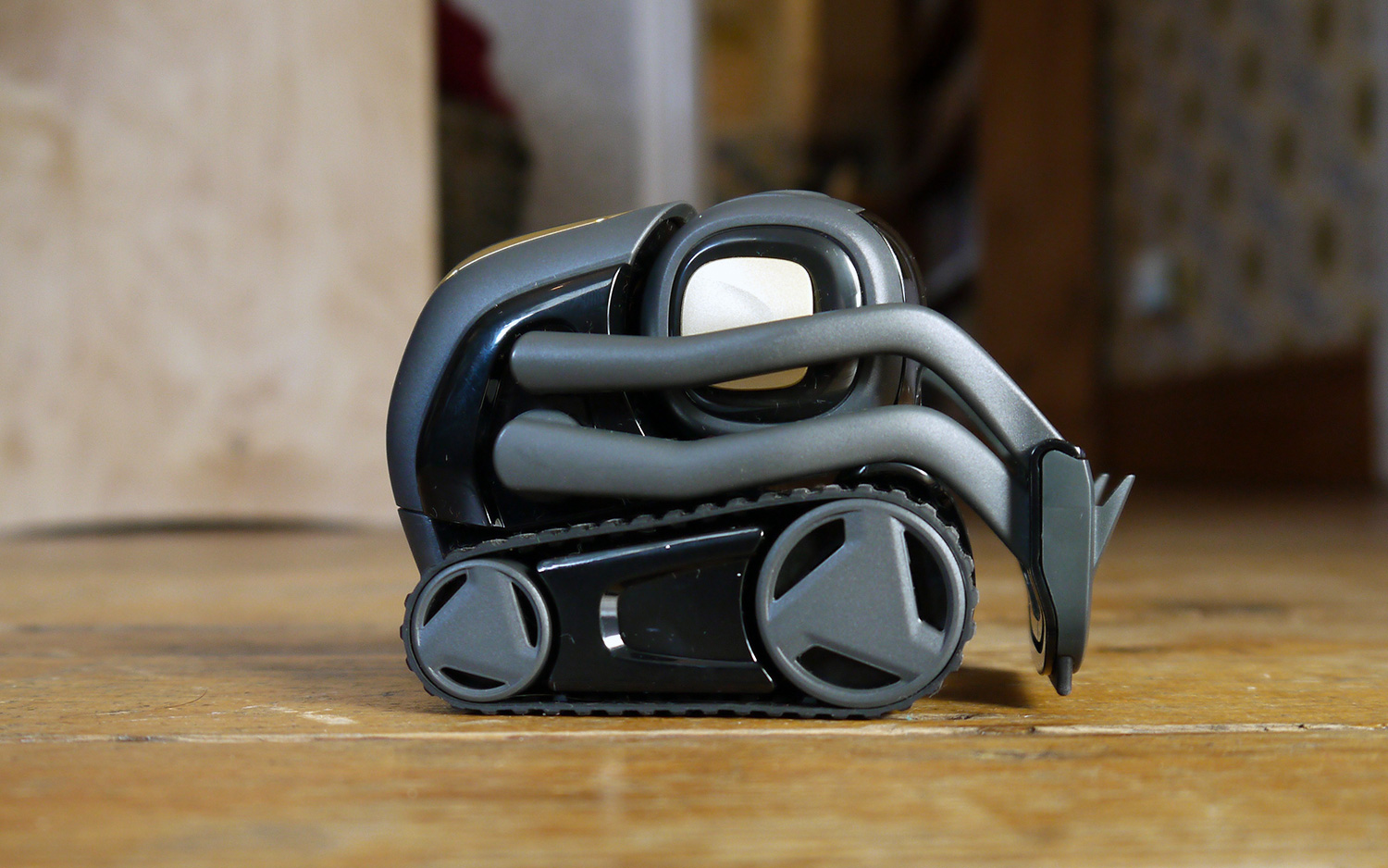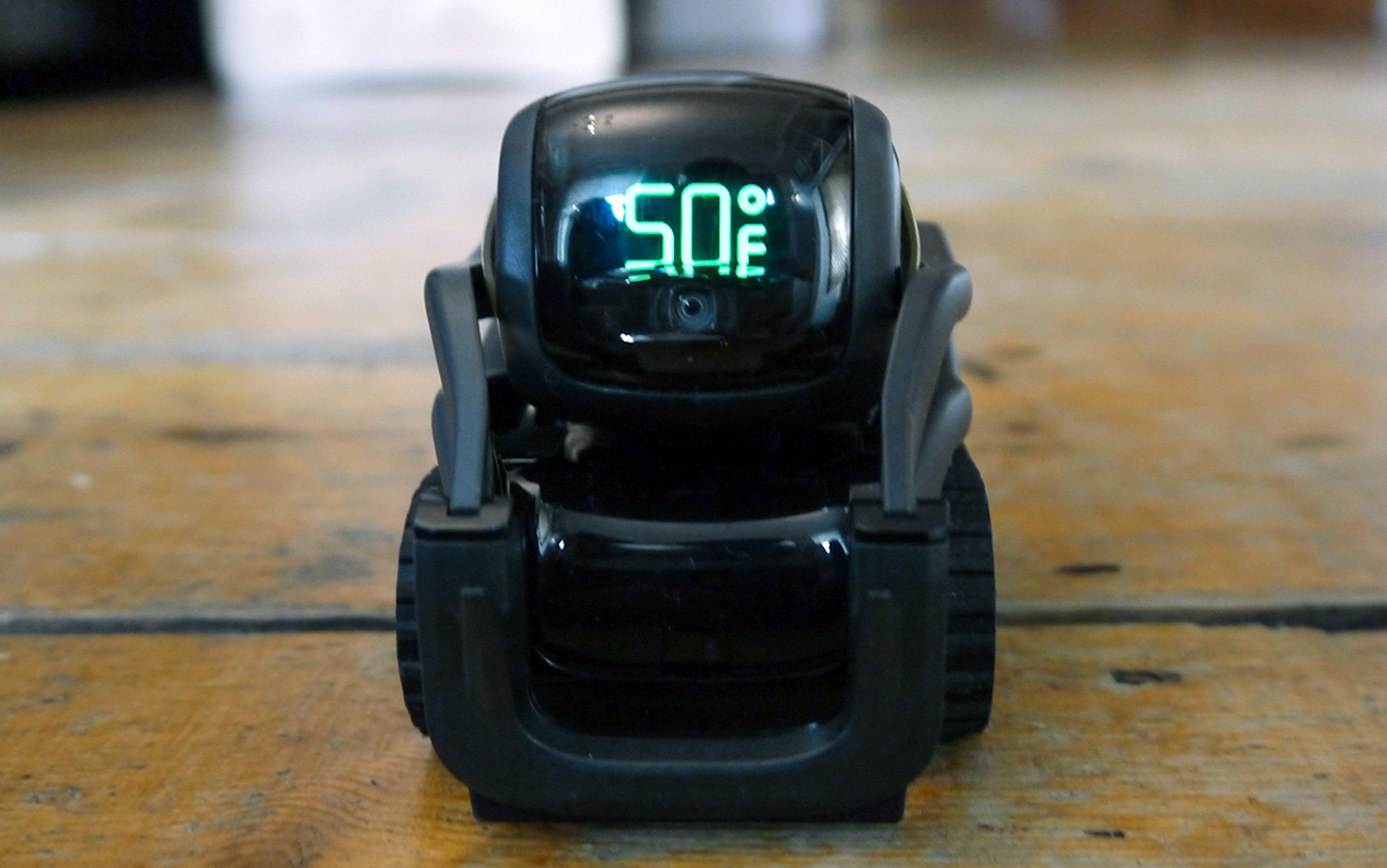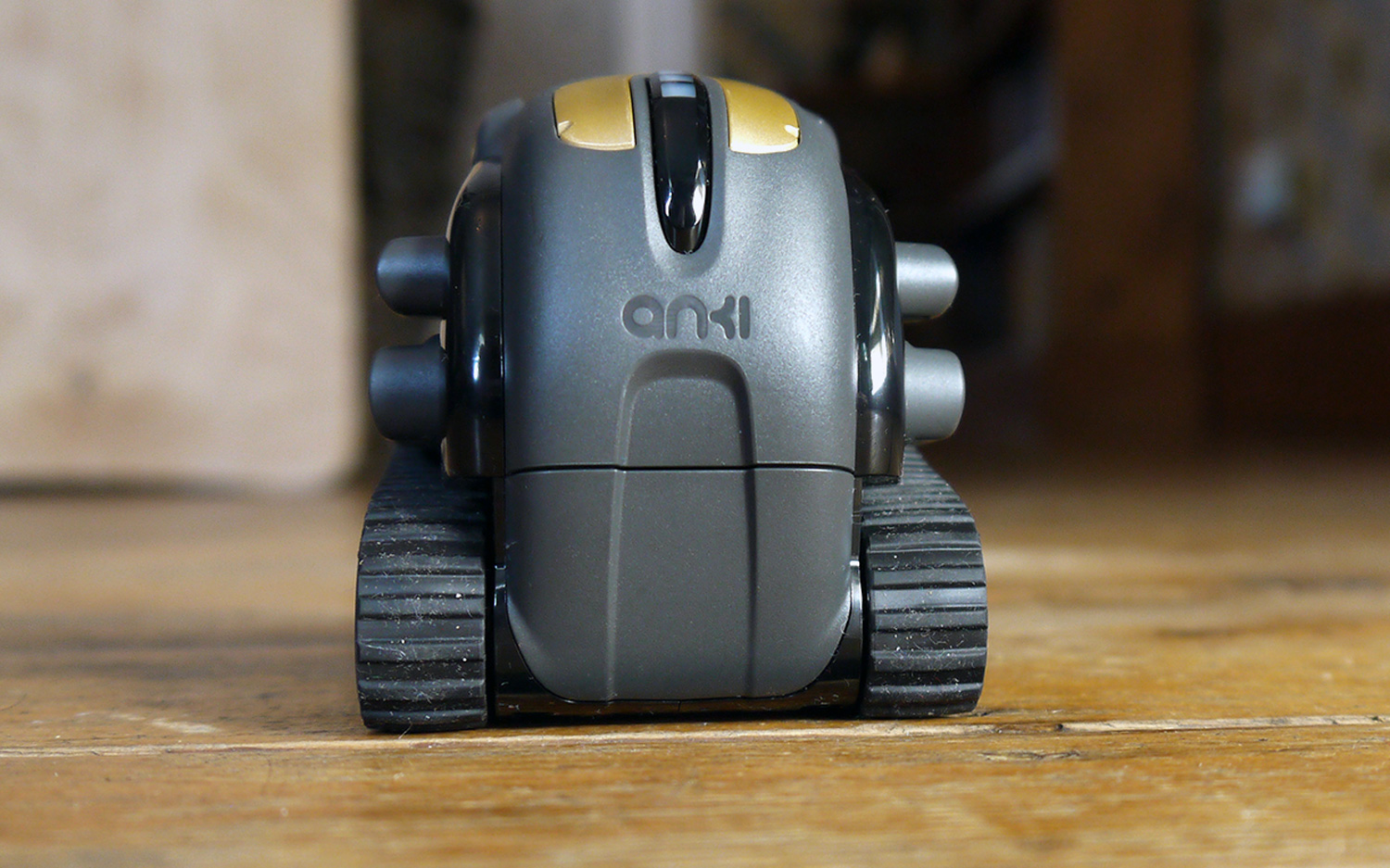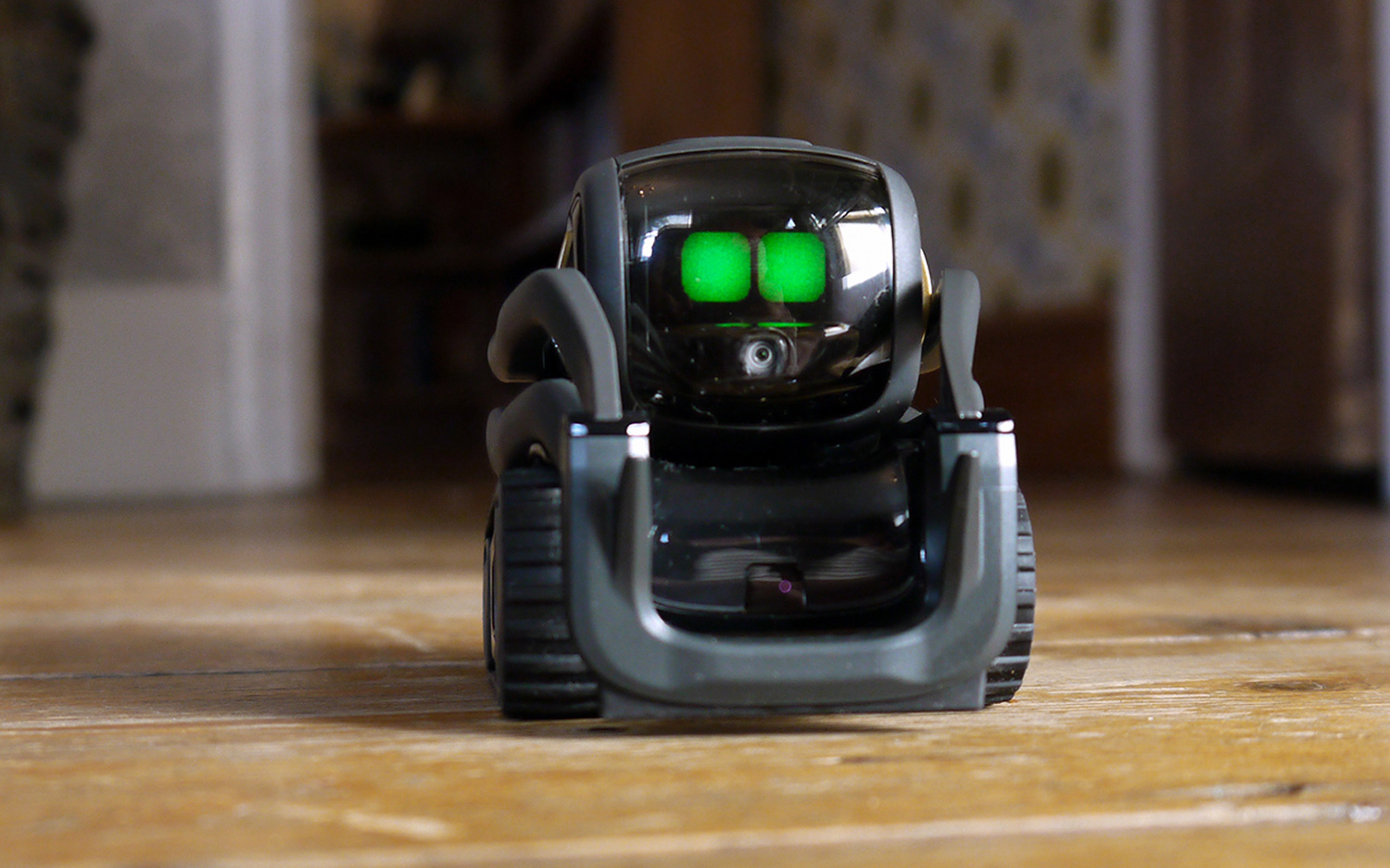Tom's Guide Verdict
The Anki Vector is a fantastic-looking minibot for the home, with great looks and a brilliant personality. Although there is a big brain there, it's just not being used enough, though. Here's hoping upcoming firmware updates unleash the serious potential that Vector has in the smart home and beyond.
Pros
- +
Vector is fairly autonomous and feels like a robot pet
- +
Face recognition is a lot of fun
Cons
- -
There's not enough to do with it to warrant replacing your Cozmo
- -
Battery life could be better
Why you can trust Tom's Guide
Anki is no stranger to bringing robots to the home. Its first robot, Anki Cozmo, brought an incredible amount of smarts and charm when it was released in the USA in 2016 and the UK in 2017.
UPDATE:We re-tested Anki Vector and its battery capabilities, and charging time, improved. We have amended this section to take this into account. We will also test again when the touted Alexa features are live in December.
Anki badged it as a robot that had a mind of its own, but, really, the wealth of features it could do — play games, help kids to code, complete a variety of tasks — was down to the smartphone app that came with it. Tethering the minibot to this app meant that the computational power needed to make Cozmo work was cloud-based.
Now, Cozmo has a bedfellow — the more grown-up Vector. While this robot looks similar to Cozmo, albeit with a slightly moodier makeover, a lot has changed inside.
Anki Vector cheat sheet
- Vector is the second home robot Anki has made; the first was Cozmo.
- Anki is the maker of the highly successful Overdrive racing-car track game.
- Vector uses voice and face recognition to personalize its experience.
- Vector is set to get Alexa integration but that feature isn't ready yet.
- Vector has a decent amount of processing power, using a 1.2GHz Qualcomm SoC.
At 2.8 x 2.4 x 1.8 inches, Vector is bigger than Cozmo but its paint job is very different. Gone are the bright childlike colors, replaced with a more sobering black and dull gold chassis.
Vector has kept the tractor-like base that helps it get around, and the same "arm" that it uses to pick up the accompanying cube that comes in the package. As we're on the subject of the cube, there is only one that comes with Vector, while Cozmo had three.
This is another hint that gaming isn’t quite at the heart of what Vector is about. So, if it isn't fun, then what is?
Features and specs: Lots of robo power
This is where the differences between Cozmo and Vector become apparent. Where Cozmo was tied to an app and had to be told what to do, Vector is a little more independent.

When I met up with Anki earlier in the year to talk to them about Vector, a big onus was put on the processing power Vector has. And compared with Cozmo it is, on paper at least, impressive.
The robot comes with a quad-core, 1.2GHz Qualcomm SoC, so there is some power in its diminutive frame.
MORE: The Best Robot Vacuums to Clean Your Pad
Also on board is an HD camera (that can see 120 degrees), an OLED screen to house all of Vector's facial expressions, and a bevy of light and infrared sensors. Again, having a similar chassis to Cozmo doesn't do Vector many favors when trying to understand how much has changed between this and Cozmo. But the robot is made from 700 components, which is double what was found on Cozmo.
Performance: What it does is great but more is needed
There's no doubting that Vector has personality. Straight off, this is a charming little robot. Putting a screen and eyes on this thing was a great move by Anki. The emotive responses that come from these facial expressions, coupled with some nice sound effects, make this a great robot companion.

Anki has worked hard to make sure that the facial expressions are unique. To do this for Cozmo, it brought in Carlos Baena, an animator who used to work at Pixar. Vector builds on what was learned from Cozmo but has had its own character developed from scratch. In total there are 1,500 expressions that have been developed by a 12-strong animation team — this time lead by Dei Gaztelumendi, Character Lead at Anki, who was previously at Paramount Pictures. But before you see all these, you have to set up Vector.
This is done through the app, with the idea being that you don't actually have to use the app much once you have set Vector up.
This takes a little fiddling with to do. First, you had to download the app and get the app to recognize your robot. This is managed using Bluetooth and took a few tries to do. It seemed to work when I got very close to the device. Recognition happens when you register your robot and a little code appears on the face that syncs your phone and robot together. Then you have to link Vector to your Wi-Fi connection. Again, this wasn't a smooth process; a number of times it wouldn't recognize my connection.

I kept trying and eventually succeeded, and Vector came alive…well, it was after a rather chunky firmware update.
Having it work with Wi-Fi, in theory, is a great idea as it means that Vector is less reliant on the accompanying app and has more of a brain to think for itself.
This is apparent straight away when placing the charging dock in the room where you want Vector to live. As long as it is in an easy-to-find place, Vector will find the charging dock when it is running low on its battery or if you ask it to sleep. It messed this up a few times, but we eventually moved it away from too much bright light and reflection, and that seemed to do the trick.
Vector is really intuitive. When it knows it is running out of battery, it goes back to its dock and recharges. A charge lasted around 30 or so minutes. We got around 45 minutes of play time out of it before it went and found its dock and started charging again - it will last even longer if it isn't constantly driving around or playing games with you. One game that isn't fun to play is 'hunt for an adaptor for the charging cable'. But you will have to play it as there isn't one in the box.

Vector is clever and rather instinctive, though, and will make use of its surroundings when you aren't asking it to do things. This is all good fun, as long as you don't mind the fact that it will occasionally randomly start up and move about, scaring the crap out of you.
When I did engage with Vector, it was fun, even if that fun was a little short-lived. A great thing Vector can do is recognize faces. You do this by introducing yourself to the robot, saying your name. So, "Hey Vector, my name is Marc" in this instance and it will then spend a little time scanning your face until its eyes change to a look of recognition. It's all rather lovely and the robot can memorize a number of faces. You can play with it, too; stroking it, fist-bumping it and calling its name all evoke great reactions.

There are myriad things you can ask Vector to do but it's a little clunky how you have to ask it. Those used to Alexa and its simplicity might be a little put off that you have to say things like: "Hey Vector, question…" then ask the question. It did work sometimes when I left the question and said: "Hey Vector, what’s the weather?" and it would respond with a picture of a cloud, or windscreen wipers wiping away rain, then the temperature.
But it worked more smoothly when asking it in the proper way. The animations it used to give you information are nice and add to Vector's personality.
MORE: Our Favorite Smart Home Gadgets and Systems
I also played Blackjack with Vector, asked for football results and a variety of other questions. It even helped me boil an egg with its timer functionality.
If you run out of things to do with Vector, then retreat to the app and you will get prompted with things to do. While this is good to have. Vector was meant to be the always-on robot "pet" that would be free from an app or a phone. Yet, I found myself going back to the app time and time again to make sure I was getting the most out of the robot.
Verdict: A robot with a heart that needs to use more of its brain
Anki Vector is a robot that's always on, fun, but limited in its scope. There is a big brain packed into a small machine and, currently, that brain is undernourished. Because of that, Vector doesn't quite match up to Cozmo's ability to help kids learn to code and play myriad games (the cube enclosed wasn't used much at all).
There's also a feeling that we've seen it all before. While Vector is undoubtedly brainier than Cozmo, its looks and current abilities are too similar to recommend this over it.
But there is more to come…much more. Alexa integration will happen through an update and this should turn Vector into a home-monitoring device — a tiny robot guard dog is in there somewhere, waiting to get out.
Its camera capabilities are fun and you can take HD snaps with the robot, but there are also 360-degree camera features in the pipeline. I am sure the gaming capabilities will increase and given how clever a company Anki is, it will have much more to offer. Until those big updates come, though, Vector is cute but just too simple for our liking.
Credit: Tom's Guide
Marc Chacksfield is Director of Shortlist Media and Editor-In-Chief of Shortlist. He's been a technology and entertainment journalist for 15 years and was previously UK Editor In Chief at Tom's Guide, TechRadar and Digital Camera World. He's also written for the likes of T3 and Tom's Hardware. In his spare time he tries to play guitar, PlayStation and supports Chelsea.

